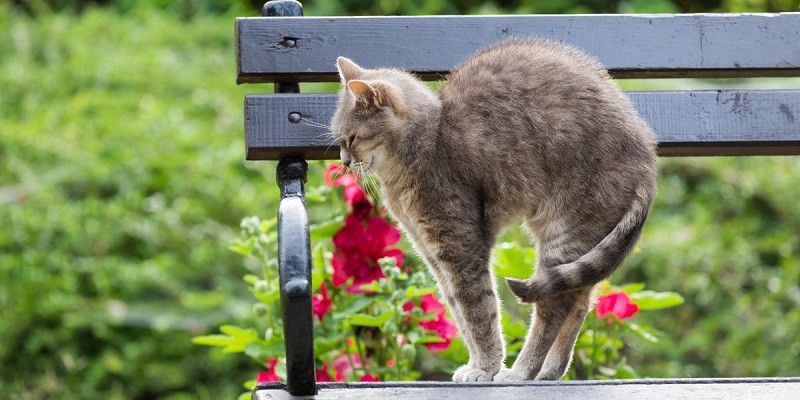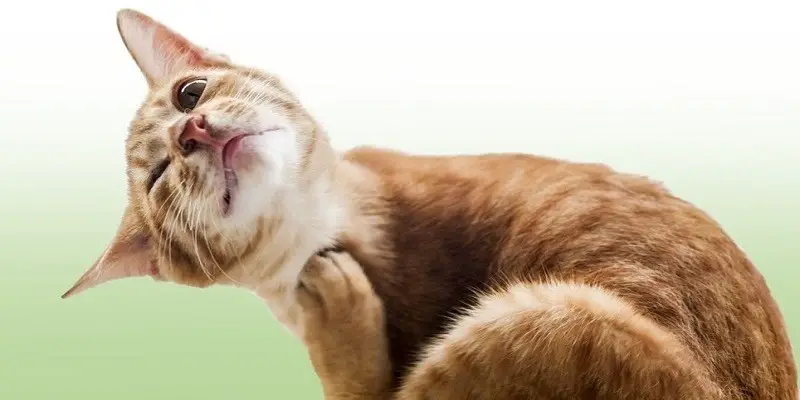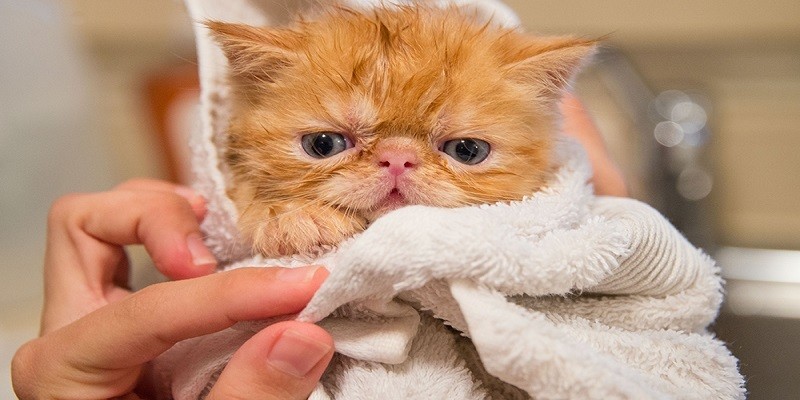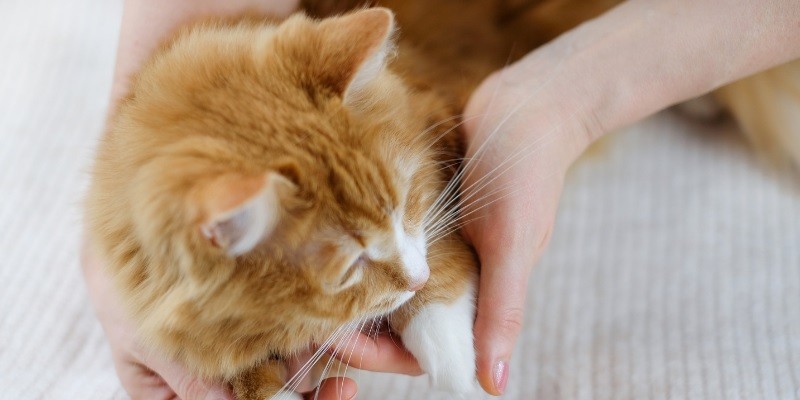Last Updated on May 20, 2023 by Pauline G. Carter
Cats arch their back as a way to communicate and show emotions. This behavior can indicate they are feeling threatened, excited, or stretching their muscles.
As a pet owner, you may have observed your cat arching its back in various situations. This posture is a common feline behavior that holds many meanings. While it’s true that cats love to stretch and this body position can be a way to loosen up muscles, arching is more than just a physical activity.
Cats use their body language to convey their mood, and the way they arch their back communicates a lot about their emotional state. Furthermore, this action is not exclusive to domestic cats but commonly seen in other species, including big cats such as lions and tigers. In this article, we explore the reasons behind this intriguing behavior and what it means when a cat arches their back.
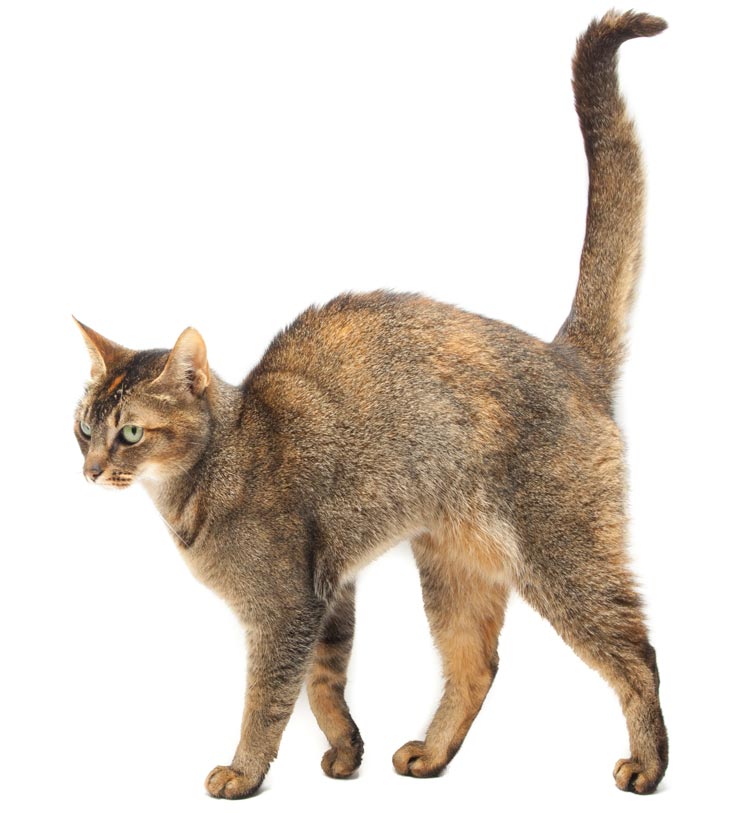
Credit: www.cathealth.com
The Anatomy Behind The Arch:
The Curves And Angles Of The Feline Spine
The arching of a cat’s back is indeed fascinating. To comprehend this quirky behavior, we first need to understand its anatomy. A cat’s spine is incredibly flexible, consisting of more vertebrae than humans and most other mammals. Here are the key points to know about the curves and angles of the feline spine:
- The cat spine consists of four regions: Cervical, thoracic, lumbar, and sacral. Each region is highly mobile.
- The thoracic and lumbar regions of the spine have a natural curvature that helps a cat maintain balance and absorb shocks while running and jumping.
- The cat’s spine also has a backward extension called the dorsal spinous process, which separates each vertebra. This extension is why we can see the bumps along their spine when they arch.
- The feline spine is also highly flexible because cats do not have a collarbone, unlike us. This flexibility enables them to reach hard-to-get-to areas while grooming and moving with agility.
- The elasticity of the spine designed for fast and sudden movements explains why a cat is capable of arching its back to such extremes.
How Muscles And Tendons Affect The Arch
Muscles and tendons have a significant impact on the arching behavior of cats. These body parts primarily facilitate the flexibility of the spine. Here are the essential points to know:
- The epaxial muscles located on a cat’s back are the primary muscles responsible for the arching of their backs. They are thin, strong, and provide support for the spine.
- Along with the muscles, the tendons are also responsible for the flexibility of the cat’s spine, especially when arching.
- When a cat feels threatened or scared, their muscles tense up to prepare for potential danger. This tension leads to arching of the back, with the cat looking larger and more intimidating to the perceived threat.
- The arching of a cat’s back can also be a sign of pleasure or contentment, with their muscles relaxed.
How cats use their tails to balance and enhance the arch
Finally, the third critical element to understand why cats arch their backs is their tails. Cats are excellent at balancing, and their tails play a vital role in ensuring they remain stable. Below are the key points to know:
- The tail of a cat is also flexible and mobile, which helps improve its equilibrium.
- When cats arch their backs, they use their tail to maintain balance by positioning it directly opposite their spine’s curve.
- The tail also enhances the arch by providing additional stability, enabling cats to maintain their position for more extended periods.
- Cats’ tails also have a range of motion, which helps them communicate their moods and emotions.
A cat’s arching behavior is fascinating. A cat’s anatomy, combined with its muscles, tendons, and tail, make it highly flexible, agile, and capable of movements that humans could only dream of. So the next time your cat arches its back, you know why!
The Reasons Behind The Behavior:
Aggression And Defensiveness: When Cats Arch Their Back
Cats are territorial animals that take their personal space seriously. In a bid to guard their turf, they arch their backs as a means of making themselves look bigger, intimidating predators or threats and to express aggression or defensiveness. Depending on the situation at hand, the reasons why cats arch their backs can be complex and varied.
Here are some key points to keep in mind:
- When cats feel cornered or uncomfortable, their instinctive reaction is to arch their backs and raise their fur to make themselves look more prominent which, in turn, can serve as a warning to potential predators or perceived threats.
- Young cats tend to adopt this posture to show older cats that they are not backing down and can hold their own in a confrontation.
- Domestic cats may arch their backs, hiss, and spit when they perceive a threat from a family dog, other cats, or even strangers.
Stretching After Sleep Or Rest
Apart from being territorial animals, cats are athletes in their own rights. Thus, they spend a lot of their day napping. As such, stretching helps them to prepare for a sprint, jump, or any other unexpected activity.
Here are some key points to keep in mind:
- Stretching after sleep helps increase blood flow and oxygenation, preparing the muscles for action. It also helps to keep the muscles flexible and relaxed.
- Cats’ vertebrae can lock up if they sleep for long periods, leaving them feeling stiff. Thus, stretching also helps them to loosen and realign the joints and vertebrae.
- During stretching, cats elongate their bodies, which stimulates their nervous systems and can be an energizing form of exercise that increases vitality and alertness.
Showing Excitement And Playfulness:
Cats are known for their fun-loving personalities and playful nature. When cats are happy, they tend to display positive body language such as arching their backs when they are excited or engaging in playtime with toys or other cats.
Here are some key points to keep in mind:
- Arching their backs is a common posture that cats adopt when they play. It can indicate intense interest in an object, show anticipation, and serve as an invitation to other cats to engage in a friendly wrestling match.
- Arching the back while playing also allows cats to stretch out their bodies while they engage their muscles in a fun and stimulating way.
- This playful posture can also be accompanied by other positive body language like purring, kneading, and rubbing their faces against you or other cats.
The Implications Of Arching For Cat Health And Behavior:
The Role Of Arching In A Cat’S Posture And Comfort
When a cat arches its back, it does not merely stretch like we do. Arching allows it to adjust its posture, either to shift the weight, loosen the spine or to protect itself. Arching makes a cat look taller, bigger, fierce or approachable.
When trying to interpret a cat’s arching behavior, one must take into account any other contextual cues in conjunction with the arch.
- Arching allows a cat to stretch and adjust its posture. It’s a crucial part of a cat’s daily routine to relieve any muscular tension.
- Arching helps cats loosen their spine by stretching the muscles in their backs.
- A cat will arch their back as a form of protection to appear more prominent or aggressive when threatened. It can also protect the vital organs of the cat during a physical attack.
- Arching can also help a cat feel comfortable and relaxed, particularly when lying down.
How The Arch Can Signal Different Moods And States
A cat’s posture can reveal a lot about its mood and feelings. Arching is just one aspect of cat body language that can help indicate a cat’s emotions.
- A cat with a relaxed arch is happy and content, suggesting that it feels comfortable and at ease.
- A cat with an arched back, flattened ears, and dilated pupils indicate it senses a threat, and the arch is a warning to stay away.
- If a cat has a high-arching back with elevated fur, it indicates fear.
- An aggressive arch will involve a lower back arch, the hair standing, and the ears slightly pulled back.
How To Interpret And Respond To A Cat’S Arching Behavior
Interpreting a cat’s arching behavior needs a keen eye and attention to detail. The first rule is to observe the cat closely and take note of its body language contextually.
- When a cat arches its back to stretch, it may be a good time to play with it or brush its fur to help alleviate pain and stress.
- If a cat arch is accompanied by a growl, hiss, or ears lying back, it indicates anger, aggression or a warning sign. Avoid interacting with a cat in aggression.
- A relaxed arch is a sign of contentment, and a cat may appreciate a gentle pet or some quiet time with no disturbances.
- If in doubt, leave the cat alone, as they can bite or scratch if they feel threatened or anxious.
Other Signs To Look For When Interpreting Arching Behavior, Such As Ear Position And Vocalizations
When interpreting a cat’s arching behavior, it is essential to consider the other clues that your feline friend is giving away, like its ear position and vocalizations.
- If the ears are flat, it often indicates aggression or fear.
- When the ears are perked, it signals that the cat is alert and paying attention.
- Vocalisations accompany arching to indicate mood. A low pitch and soft tone indicate a relaxed cat. In contrast, a high-pitched tone is common in cats who are in pain or feeling anxious.
How To Differentiate Between Happy Arching And Aggressive Arching
Differentiating between happy arched backs and aggressive arched backs requires observation. Contextual clues like ears, vocalisation and other body language can help determine the mood.
- Happy arching is slow and gentle, with a relaxed body and eyes. The ears of the cat are usually up straight, and they are often purring.
- Aggressive arching is quick with a stiff body and wide eyes, with the ears flattened down or to the sides and growling or hissing noises.
Tips For Responding Appropriately To A Cat’S Arching Signals
When interpreting arching in cats, it is crucial to consider the context of their behavior and keep these tips in mind:
- Be gentle and patient around a cat who arches its back. Treat it with respect and avoid threatening behaviour.
- Always approach a cat with caution and observe it before you pet it to ensure it feels comfortable with you.
- Never approach a cat that is hissing, growling, or has their ears flattened.
- Pay attention to the mood of the cat and its body language, so you can respond appropriately.
Frequently Asked Questions For Why Do Cats Arch Their Back?
Why Do Cats Arch Their Back While Walking?
Cats arch their back while walking for balance and to display aggression or fear.
Is Arching Their Back A Sign Of Pain In Cats?
Yes, sometimes cats arch their back due to pain, discomfort, or injury.
Why Do Cats Arch Their Back When Petted?
When cats arch their back while petted, they are expressing pleasure and excitement.
Why Do Cats Arch Their Back And Puff Up?
Cats arch their back and puff up to make themselves appear larger when they feel threatened.
Can Cats Arch Their Back Too Much?
Yes, excessive arching of the back by a cat could indicate an underlying health issue that requires vet attention.
Conclusion
Cats are fascinating creatures that have always captured the attention of humans. Arching their backs is just one of the many things that make them who they are. There are various reasons why cats arch their backs, ranging from expressing emotions to stretching their muscles.
Additionally, their body language can indicate their level of comfort, mood, or even their physical state. Understanding the reason behind your cat’s arched back can help you build a deep and strong bond with them. It is crucial to give them the space and comfort they need to feel safe and secure in their environment.
Lastly, if you observe any concerning changes in your cat’s behavior, do not hesitate to seek advice from professionals. Overall, arching their backs is just one of the many ways cats communicate with us, and it is up to us to listen and understand their language.
About Author (Pauline G. Carter)

Pauline G. Carter is a well-known pet blogger who has written about the world of pets for several years. She is passionate about pets, from cats and dogs to birds, reptiles, and poultry. Her blog, which is updated regularly, is filled with articles and guides on pet care, nutrition, and training. She also shares her experiences and observations on pet ownership, making her blog relatable and informative for pet lovers. She is a true animal advocate and is dedicated to promoting responsible pet ownership. Let’s Go …
